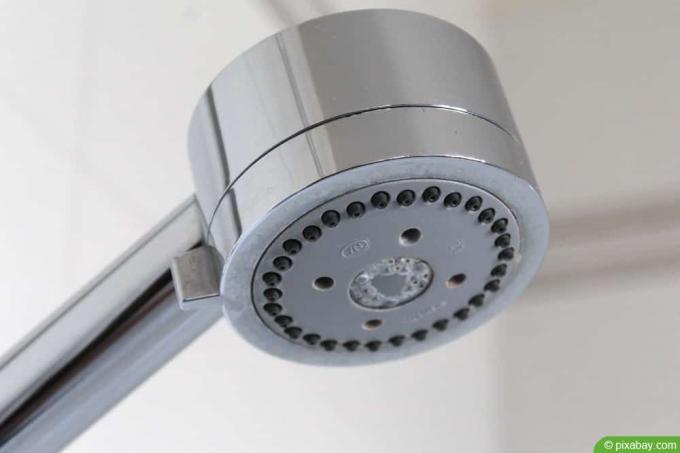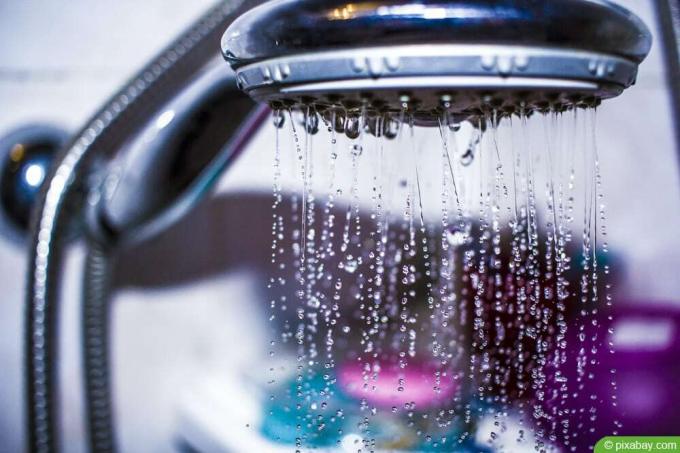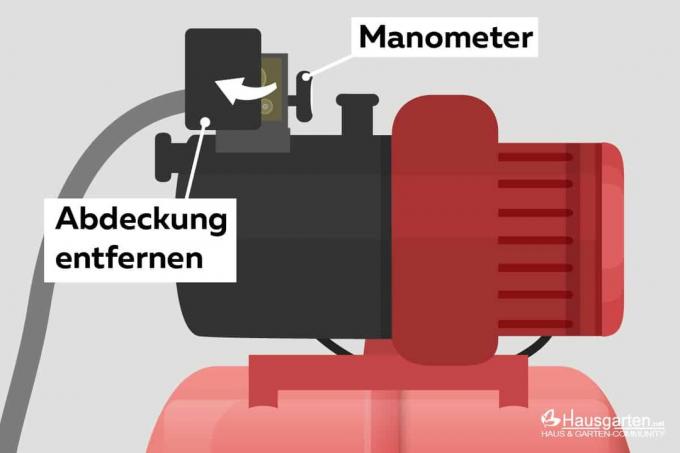

Table of contents
- shower head & hose
- Boiler & instantaneous water heater
- shut-off valve
- System for increasing the pressure
Showering is only pleasant with a lot of water pressure. However, if a small trickle comes out of the shower head, an increase in pressure is required. If there are certain causes, you can solve the problem yourself.
shower head & hose
The most common causes of low water pressure in the shower include calcified and clogged shower heads and hoses. Limescale deposits on the shower head are usually visible from the outside. In order to check the inside, the shower has to be disconnected from the hose. Then turn on the faucet. If the water flows again with more pressure, the showerhead is the culprit. Whether the hose is blocked or calcified can be determined by twisting it off with a pipe wrench. If the water then flows with sufficient pressure without the hose, he is the trigger. Sometimes a flow limiter is responsible for the low water pressure built into the hand shower. This saves a lot of water, but it reduces the enjoyment of the shower considerably.
- Descale the shower head and hose regularly
- Soak in solution with highly concentrated vinegar for several hours
- Effect of vinegar increases with sodium bicarbonate (baking soda)
- Danger: Foams up heavily on first contact!
- Alternatively, use chemical limescale removers
- Replace extremely clogged showerheads and hoses
- Remove any built-in flow restrictor
A notice:
When twisting off the hose with the pipe wrench, be careful not to scratch or even damage the screw.
Boiler & instantaneous water heater
If the low pressure only occurs with warm water, this may be due to a defect in the hot water system. This problem depends on whether the hot water is produced locally using a boiler or flow heater. If there is advanced calcification on the devices, you can usually remove them yourself. Possible causes for the low water pressure can also be brittle and leaking pipes. In larger residential complexes, the hot water is often generated centrally via the heating system. These systems are usually checked by the responsible caretaker, landlord or administrator, who is also responsible for the subsequent repair.

- Open the housing of the devices and check for limescale
- Descale hot water systems regularly
- Check lines with care, do not take any risks
- Escaping water must never come into contact with the electrical system
- Unplug the device before repairing
- Serious damage to the device or house water pipe is also possible
- Such defects can only be repaired by a specialist
shut-off valve
Shut-off valves are installed in many apartments, which determine the state of the water pressure. These valves are usually centrally accessible and often not fully open. As a rule, these devices are located directly in the bathroom or in the kitchen, they are rarely housed in the basement. If the valve cannot be found or reached, ask the landlord for clarification.
- Check that the valve is turned on correctly
- Turn it up if that's not the case
- Then check the water pressure again
- It is better to turn it up carefully and gradually
Tip:
When turning, be careful not to over-tighten the shut-off valve to avoid fatal damage.
System for increasing the pressure
If the water arrives in the household with a low pressure, a system for increasing the pressure can provide the remedy you are looking for. This system is a special pump with which the water pressure can be sustainably increased. The installation of the device can sometimes be a bit complicated depending on the structure of the water pipes.
- The purchase price of the system is quite high
- Installation not always possible, check before buying
- Higher pressure results from more water per unit of time
- Water is temporarily stored in the additional container
- In the case of a rented apartment, clarify the installation with the landlord beforehand
 Home editorial office
Home editorial office
Learn more about water

Drain in the shower stinks: these 7 home remedies will help
If the drain in the shower stinks, it can be unpleasant not only during use. Bad smells from the pipes can spread throughout the bathroom. This guide shows how the problem can be solved with home remedies.

Water consumption when showering in liters per minute
Anyone who knows how much water is consumed when showering in liters can use this to reduce costs in a targeted manner. Especially with regard to rising energy prices and a more conscious use of resources, there is often an undreamt-of savings potential.

Install check valve vertically or horizontally?
A non-return valve prevents the flow of liquids or gases in the wrong direction due to its operating principle. This makes it an important component, for example, in garden pond pumps or on the heating system. But should it be installed vertically or horizontally? We clarify.

Domestic waterworks: how to increase the pressure
With a domestic waterworks it may be necessary, depending on the depth, to increase the pressure. But how can the setting be made and when is it necessary to make an adjustment? All important information can be found here.

Domestic waterworks: set the pressure correctly
Adjusting the pressure correctly in a domestic waterworks is very easy with the appropriate knowledge. Our guide shows how the measure should be carried out and what to look out for.

Domestic waterworks does not draw water: what to do?
If the domestic waterworks does not draw water, the question arises: what to do? The answer depends on the type of pump and the problem at hand. Our guide shows possible causes and solutions.


